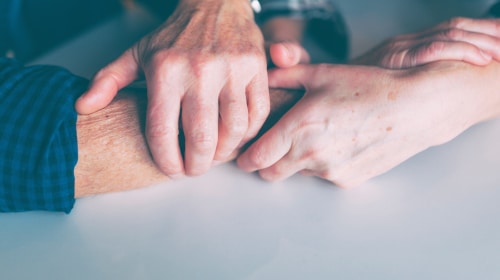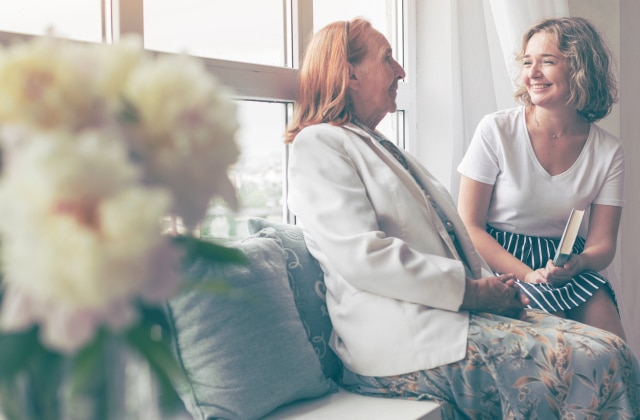Balancing Work and Caregiving Responsibilities
In today’s fast-paced world, many individuals find themselves juggling work and caregiving responsibilities for family members. This delicate balancing act can be challenging but is essential for both personal and professional well-being.
Impact of Family Caregiving on Work
Caregiver-Friendly Workplaces: The first step in addressing the impact of family caregiving on work is recognizing the need for caregiver-friendly workplaces that support caregivers. These are environments where employers understand and assist employees who have caregiving responsibilities. Such workplaces often offer flexible work options and caregiver work arrangements that accommodate caregiving needs.
Productivity and Absenteeism: Balancing work and caregiving can take a toll on an individual’s productivity. Caregivers often experience higher rates of absenteeism due to unexpected caregiving emergencies or routine medical appointments. These absences can impact work performance and create additional stress.
Emotional and Mental Health: Caregivers may also struggle with emotional and mental health challenges. The emotional toll of caregiving, coupled with work-related stress, can lead to burnout, anxiety, and depression if not adequately addressed.
Tips for Balancing Work & Caregiving
Open Communication: The key to balancing work and caregiving is open communication with your employer. Discuss your caregiving responsibilities and explore flexible work options, caregiver work arrangements, and strategies that suit your needs.
Time Management: Effective time management is crucial when juggling work and caregiving. Create a daily or weekly schedule that allocates specific blocks of time to work and caregiving tasks. Prioritize your responsibilities and set realistic goals.
Seek Support: Don’t be afraid to seek support from family members, friends, or community resources. Share caregiving duties with others to prevent burnout and create a support system.
Self-Care: Remember to take care of yourself. Prioritize self-care activities like exercise, relaxation, and hobbies to recharge and reduce stress.

In conclusion, juggling work and caregiving responsibilities is a complex undertaking. Caregivers face unique challenges that can impact their personal and professional lives. However, with open communication, effective time management, and a supportive network, caregivers can find a balance that allows them to thrive both in their careers and as caregivers. Remember, seeking help and support is a sign of strength, not weakness, and can ultimately lead to a more sustainable and fulfilling life.
Our agency Angel Care Inc. of home care nursing has huge range of qualified specialists and we give support and assistance in home care cases. If you need any consultation, please contact to us: 917-507-7500 or by e-mail at [email protected]

As we age, maintaining a strong and healthy back becomes increasingly important. Back pain and discomfort are common issues that many seniors face, impacting their mobility and overall well-being. Fortunately, incorporating back strengthening exercises into a daily routine can bring about significant benefits and help seniors maintain a better quality of life. A strong back is essential for supporting the spine, improving posture, and reducing the risk of injury. Back strengthening exercises target key muscles in the lower back, core, and posterior chain, promoting better stability, flexibility, and overall strength. Before starting any of the listed exercises, make sure to check with your physician. Or contact our Physical Therapy unit for a consultation. Exercises for Back Pain for Seniors Back pain is a prevalent issue among seniors, often caused by factors such as muscle weakness, poor posture, and age-related degeneration of the spine. Regular exercise can play a crucial role in managing and alleviating back pain. Here are some effective exercises tailored specifically for seniors experiencing back pain: Cat-Cow Stretch: This exercise targets the flexibility of the spine and helps relieve tension in the back muscles. Start on your hands and knees, then arch your back upward (like a cat) while inhaling. Then, round your back downward (like a cow) as you exhale. Repeat this gentle stretching motion for 8-10 repetitions. Exercises for Seniors with Lower Back Pain Lower back pain can be especially bothersome for seniors, limiting their mobility and overall quality of life. However, there are safe and effective exercises that can help seniors manage and reduce lower back pain. Here is an exercise tailored for seniors dealing with lower back discomfort: Pelvic Clocks: Lie on your back with knees bent and feet flat on the floor. Imagine a clock on your pelvis, and gently tilt your pelvis in different directions, following the numbers on the clock. This exercise promotes mobility and stability in the lower back region. Exercise to Strengthen Lower Back for Seniors Strengthening the lower back muscles is crucial for seniors, as it can improve stability, reduce pain, and prevent injuries. Here is an exercise to strengthen the lower back specifically designed for seniors: Bird-Dog Exercise: Start on your hands and knees. Extend one arm forward and the opposite leg backward, creating a straight line with your body. Hold for a few seconds, then switch to the other arm and leg. This exercise strengthens the entire posterior chain, including the lower back. Scoliosis Exercises for Seniors Scoliosis, an abnormal sideways curvature of the spine, can be a challenging condition for seniors to manage. While exercise alone cannot cure scoliosis, specific exercises can help improve posture, increase flexibility, and reduce discomfort. Here is an exercise that may benefit seniors with scoliosis: Side Stretch: Stand with feet shoulder-width apart. Raise one arm overhead and lean gently to the opposite side, elongating the spine. Repeat on the other side. This exercise helps stretch the spine and improve lateral flexibility. It's essential for seniors with scoliosis to consult with a healthcare professional or physical therapist to determine the most appropriate exercises and ensure they are performed correctly and safely. Benefits of Back Strengthening Exercises for Seniors Engaging in back strengthening exercises can bring numerous benefits to seniors, improving their quality of life. Some advantages include increased muscle strength, improved posture, enhanced flexibility, better balance, reduced back pain, and increased bone density. Specialists at Angel Care Agency offer a wide range of skilled services dedicated to caring for elderly individuals. Whether it's assisting with daily tasks, providing physical therapy exercises, or offering companionship, our team is dedicated to supporting seniors in their journey to improved back health. If you require consultation or assistance, please don't hesitate to reach out to us at 917-507-7500 or via email at [email protected] We are here to help seniors lead more fulfilling lives with less back pain and enhanced overall well-being.

What are the best chairs for the elderly? Choosing the right chairs for the elderly plays a crucial role in ensuring comfort and safety in their daily lives. When selecting chairs for the elderly, their needs for support and stability should be taken into account. The perfect chairs for the elderly typically feature a comfortable seat with armrests and a sturdy construction, providing maximum support and safety when sitting down and getting up. These chairs may also have features like lift mechanisms, making them even more suitable for older individuals. Top 10 Chair Features to Consider for Elderly Patients When choosing an elderly recliner chair, it's crucial to prioritize features that enhance comfort, support, and overall well-being. Here are the top 10 chair features to consider for elderly patients: Ergonomic Design: Opt for chairs with an ergonomic design to provide proper lumbar support and maintain a healthy posture. Reclining Mechanism: An elderly recliner chair should have a smooth and easy-to-operate reclining mechanism, allowing seniors to adjust the chair to their preferred position effortlessly. Lift Functionality: Look for chairs equipped with a lift feature to assist elderly individuals in standing up and sitting down safely. Armrests: Wide, padded armrests provide extra support when getting in and out of the chair, as well as a comfortable resting place for arms. High-Quality Upholstery: Choose chairs with durable, easy-to-clean upholstery that can withstand wear and tear. Sturdy Frame: Ensure the chair has a strong and stable frame to support the elderly user's weight and provide long-lasting durability. Pockets and Storage: Some chairs come with built-in pockets or storage compartments, allowing seniors to keep essential items within easy reach. Heat and Massage: Consider chairs with heat and massage functions to provide therapeutic relief for aching muscles and joints. Swivel Base: Swivel functionality can make it easier for seniors to access nearby items without straining. Remote Control: Chairs with user-friendly remote controls make it simple for elderly patients to adjust the chair's settings as needed for optimal comfort. When evaluating an elderly recliner chair, these features can significantly improve the quality of life for seniors, offering them comfort, support, and independence in their daily activities. What Types of Chairs for the Elderly Are Available? When it comes to selecting the right seating solutions for the elderly, there is a wide array of options to consider, each designed to cater to specific needs and preferences. Among the most popular choices are reclining chairs for elderly individuals. These chairs offer various recline positions, allowing seniors to find the perfect angle for relaxation and comfort. Many recliner chairs designed for the elderly also include additional features such as massage functions, heat therapy, and built-in pockets for convenience. For added assistance, there are power lift chairs for the elderly. These versatile pieces of furniture combine the benefits of reclining and lifting mechanisms, offering seniors the freedom to recline and stand up effortlessly with just the push of a button. They are particularly useful for individuals with limited mobility or strength. In summary, when considering chairs for the elderly, you'll encounter a range of options, including reclining chairs for the elderly and power lift chairs for the elderly. The choice ultimately depends on the specific needs and preferences of the individual, but all these options are designed to enhance comfort, support, and overall quality of life for elderly users. So How Do I Chose a Chair for my Elderly Relative? Selecting the right seating option can significantly impact the comfort and well-being of your elderly relative. When considering recliners for elderly individuals, it's essential to evaluate their specific needs and preferences. Start by assessing their mobility level and any physical limitations they may have. Chairs for the elderly should provide adequate support and stability, making it easier for them to sit down and stand up. Look for models with sturdy frames, comfortable cushioning, and adjustable features to accommodate their comfort preferences. Additionally, consider chairs for the elderly that offer ease of maintenance and cleaning. By carefully considering these factors, you can choose a recliner that enhances your elderly relative's comfort and overall quality of life. Home care can be an important part of treatment not only for seniors, but also for people experiencing temporary health difficulties. A good home care agency can help make your life more comfortable and better. Our Angel Care Inc. home care agency has a huge staff of qualified professionals, and we provide support and assistance in all cases of health problems. If you need a consultation, please contact us: 917-507-7500 or email [email protected]



